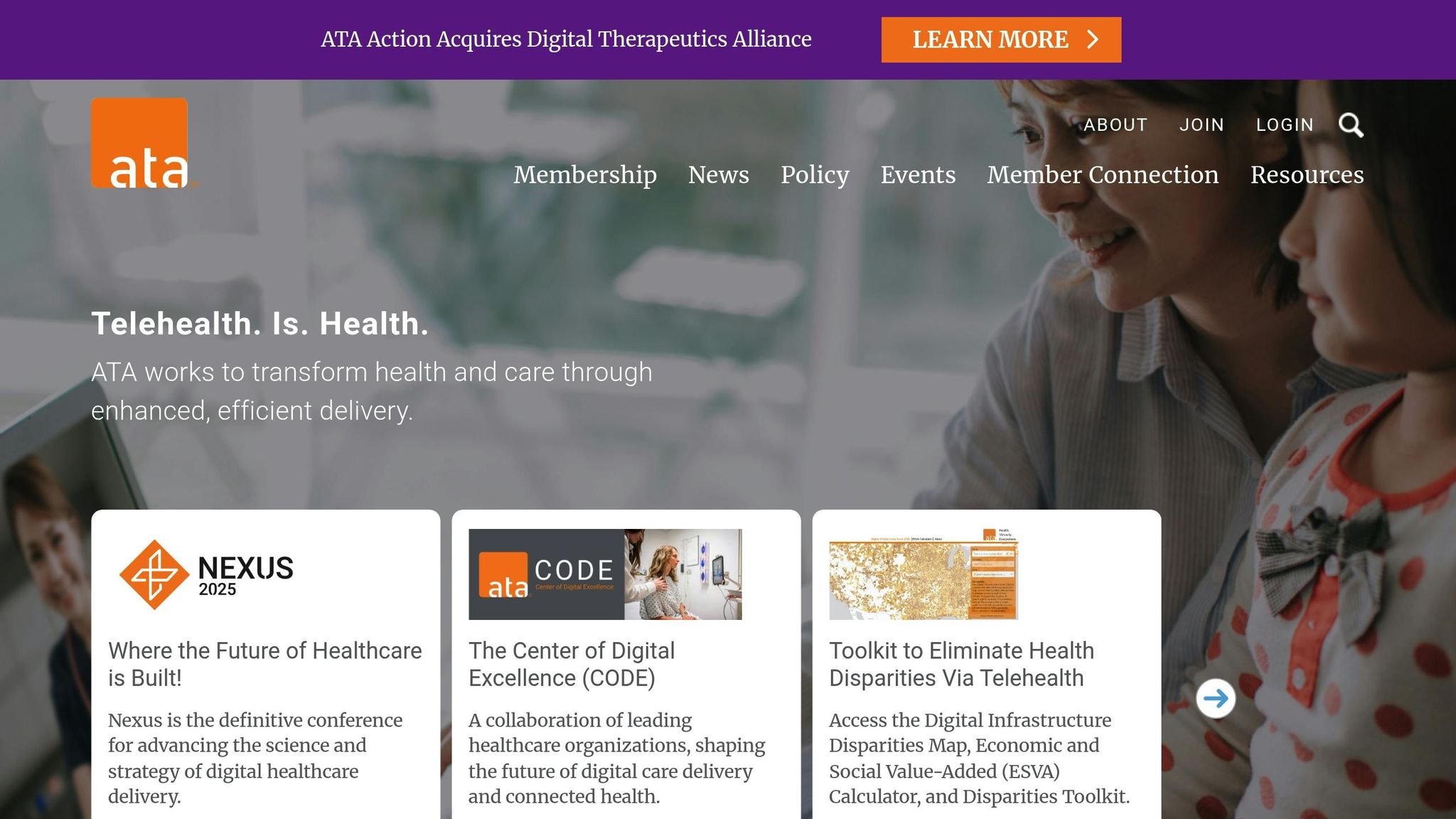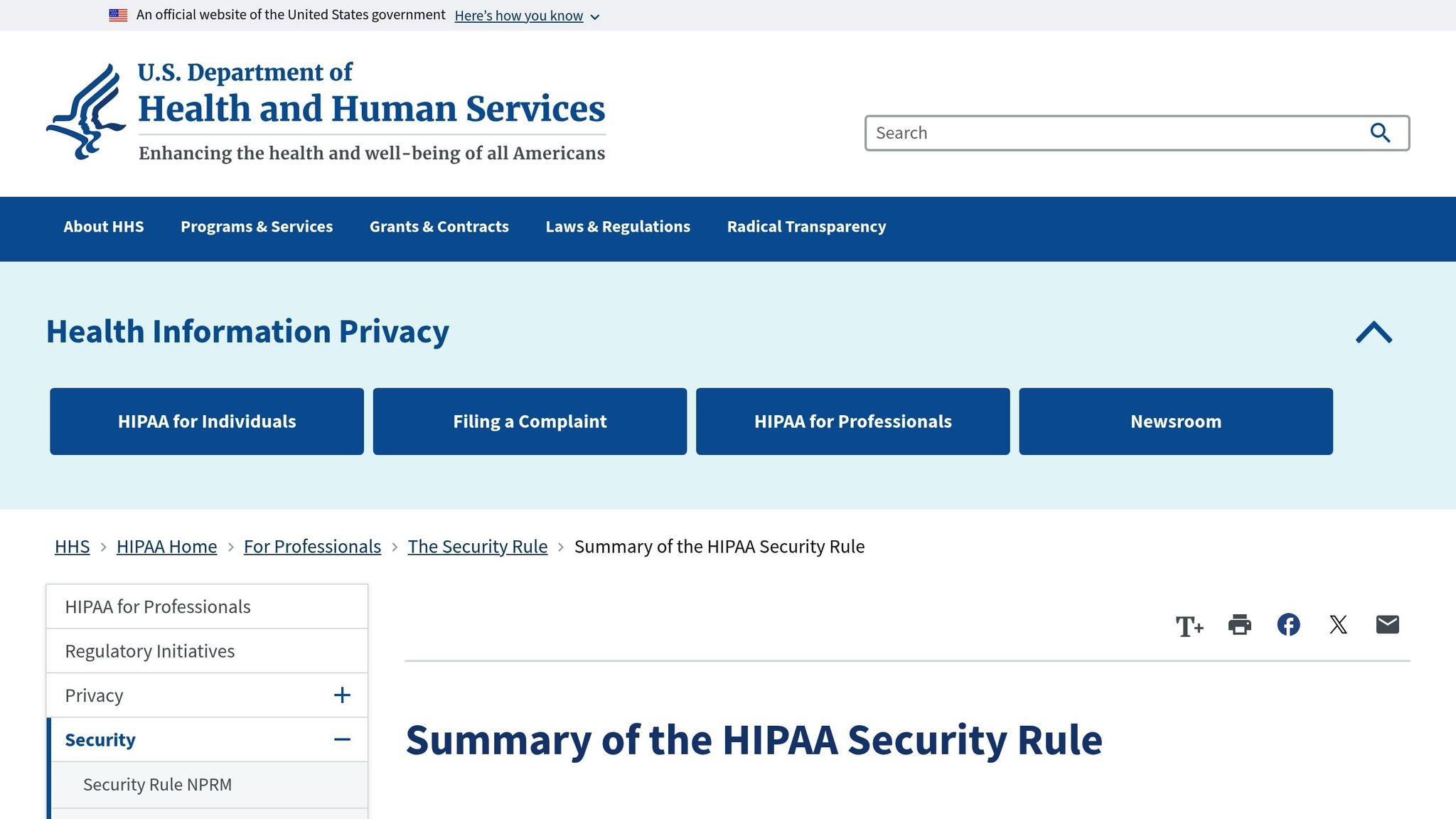Cross-Border Telehealth: Privacy Challenges
Cross-border telehealth is growing fast, but it comes with serious privacy challenges. Patients and providers must navigate different global data laws, ensure secure data handling, and address legal accountability across borders. Here’s a quick breakdown of the main issues and solutions:
-
Key Privacy Issues:
-
Solutions:
- Use strong encryption and multi-factor authentication.
- Create clear data-sharing agreements.
- Follow the strictest privacy standards globally.
These steps help protect sensitive medical data, maintain patient trust, and avoid legal risks. Keep reading for a deeper dive into global regulations and actionable strategies.
Main Privacy Issues in Cross-Border Care
Navigating Different National Data Laws
Providing virtual care across borders means understanding and following each country's specific rules for consent, data processing, and how quickly breaches must be reported.
Data Ownership and Legal Accountability
It's crucial to clearly outline who owns the data, who is responsible in case of a breach, and which country's laws will govern every cross-border agreement.
Protecting Data Across Borders
Use measures like end-to-end encryption, secure storage methods, and multi-factor authentication to safeguard data both during transmission and while stored.
Next, we'll look at how global standards like HIPAA and GDPR address these challenges.
Consumer Privacy in Telehealth: An Interview with the ATA

Global Data Protection Rules
Telehealth providers must follow key data protection laws worldwide to ensure patient data is handled securely and responsibly.
HIPAA Rules for U.S. Providers

In the U.S., the Health Insurance Portability and Accountability Act (HIPAA) outlines how patient health information should be protected. Providers are required to establish technical, physical, and administrative safeguards. Additionally, they must sign Business Associate Agreements (BAAs) with any third-party vendors that handle protected health information.
GDPR Requirements in Europe
The General Data Protection Regulation (GDPR) governs how patient data is processed in Europe. Telehealth providers must:
- Keep detailed records of data processing activities.
- Report data breaches to authorities promptly.
- Respect patient rights, such as access to or deletion of their data.
- Use approved methods when transferring data outside the EU.
Privacy Laws in Other Regions
Other countries also have their own privacy laws, including:
- Canada: Personal Information Protection and Electronic Documents Act (PIPEDA)
- Australia: Privacy Act
- Brazil: General Data Protection Law (LGPD)
To simplify compliance across borders, many telehealth providers choose to follow the strictest applicable standards across their services. This approach not only ensures compliance but also strengthens patient privacy protections.
Up next, we’ll explore actionable steps you can take to meet these global standards.
sbb-itb-3922076
How to Address Privacy Challenges
Here are some practical steps to close the privacy gaps mentioned earlier:
Set Strong Security Standards for Cross-Border Data
- Use end-to-end encryption to protect patient communications.
- Implement multi-factor authentication (MFA) for secure user access.
- Conduct regular security audits and vulnerability assessments.
- Maintain secure backup systems with geographic redundancy.
Create Clear Data Agreements for Cross-Border Exchanges
- Clearly define roles and responsibilities for all parties involved.
- Specify data storage locations and transfer protocols.
- Establish procedures for breach notifications.
- Ensure compliance with the legal requirements of all relevant jurisdictions.
Improve Consent Methods for Cross-Border Care
- Offer multilingual digital consent forms for better accessibility.
- Provide straightforward explanations of how data will be used and stored.
- Allow patients the option to withdraw consent at any time.
- Regularly review and renew consent agreements to keep them up to date.
Use Privacy Tools for International Data
- Apply advanced encryption methods with secure key management.
- Enforce role-based access control and biometric verification.
- Set up automated systems for real-time threat alerts.
- Use compliance platforms to automate policy checks and reporting.
Train Staff on Cross-Border Privacy Rules
- Keep staff informed about changes in international regulations.
- Use role-based scenarios and hands-on exercises for practical learning.
- Regularly certify staff understanding of privacy protocols.
- Develop and communicate clear incident response procedures.
Explore Medical Tourism Services

Explore Medical Tourism ensures privacy and data protection by embedding global compliance measures into its platform. It follows HIPAA and GDPR standards, utilizing encryption, secure data storage, and carefully reviewed provider agreements to safeguard patient information. Each clinic is assessed for its data-handling practices, encryption protocols, and compliance with international privacy regulations.
Patients using the platform can:
- Access and review clinic privacy policies, security credentials, and compliance records from over 50 countries.
- Compare how providers manage data protection and handle breach notifications.
- Conduct secure, encrypted consultations with verified clinics.
- Download consent forms and data-use guides in multiple languages.
Conclusion
Cross-border telehealth requires strong encryption, clear international data transfer agreements, secure platforms, and standardized consent processes to safeguard patient information and maintain trust. Without these measures, providers risk data breaches, legal consequences, and reputational harm.
As telehealth continues to expand, creating unified privacy standards will be key to enabling secure and compliant medical data sharing across borders. This will ensure patient care remains effective while respecting privacy regulations in different regions.
